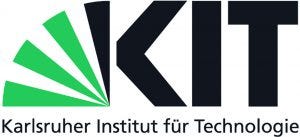Voices of Biotech
Podcast: MilliporeSigma says education vital to creating unbreakable chain for sustainability
MilliporeSigma discusses the importance of people, education, and the benefits of embracing discomfort to bolster sustainability efforts.
August 11, 2016
Sponsored by Hamilton
 Today algae are commercially cultivated for pharmaceuticals, nutraceuticals, cosmetics, and aquaculture purposes.
Today algae are commercially cultivated for pharmaceuticals, nutraceuticals, cosmetics, and aquaculture purposes.  The abundance of vitamins, minerals, and trace elements as well as the fatty acid profile and thickening and stabilizing functions of their polysaccharides make algae valuable. Algae also can be used to produce biodiesel, bioethanol, and biomass that can be burned to generate heat and electricity. Like plants, algae use sunlight during photosynthesis. Photosynthesis is an important biochemical process in which plants, algae, and some bacteria convert the energy of sunlight to chemical energy. Algae capture light energy through photosynthesis and convert inorganic substances such as CO2 into simple sugars or oils using the captured energy.
The abundance of vitamins, minerals, and trace elements as well as the fatty acid profile and thickening and stabilizing functions of their polysaccharides make algae valuable. Algae also can be used to produce biodiesel, bioethanol, and biomass that can be burned to generate heat and electricity. Like plants, algae use sunlight during photosynthesis. Photosynthesis is an important biochemical process in which plants, algae, and some bacteria convert the energy of sunlight to chemical energy. Algae capture light energy through photosynthesis and convert inorganic substances such as CO2 into simple sugars or oils using the captured energy.

KIT laboratory
Several factors (e.g., light, temperature, pH, nutrients, aeration, and mixing rate) can be measured to determine the growth rate of algae. To optimize yield, algae is cultivated in closed photobioreactors. Within those, process conditions can be accurately controlled, and no infection-carrying algae species will occur. The Karlsruhe Institute of Technology (KIT) focuses on development and modeling phototrophic bioprocesses of green and red algae for the production of high-value products. Major parts of its research are application- and industry-oriented projects, which are executed in collaboration with academic and industrial partners.
Benefits of Polilyte Plus H Arc and VisiFerm DO Arc Sensor |
Long sensor life time |
Easy maintenance |
Stable and reliable readings |
Intelligent sensor technology |
 Arc Technology Enables Quick and Easy Integration In-Process Control Systems
Arc Technology Enables Quick and Easy Integration In-Process Control Systems

Polilyte Plus H Arc (top) and VisiFerm DO Arc (bottom) units
For outdoor projects at its site at Campus North and for indoor projects, the KIT requires robust and reliable pH and dissolved oxygen (DO) sensors with long shelf life. The goal of these projects is to optimize growth conditions, increase the yield of algae products, and improve the design of photobioreactors. Before every run, an autoclavation is executed. In addition, the integration into a Siemens S7-1200 process control system (PCS) had to be easy, fast, and through a digital protocol. For visualization, LabView was programmed to capture data from the S7 unit through an OPC server. Polilyte Plus H Arc and VisiFerm DO Arc systems provide a digital Modbus signal directly to the PCS, which reduced upfront costs of a transmitter. Because of the Arc technology, sensors can be calibrated easily at the laboratory using the Hamilton Device Manager (HDM) system and stored on the shelf before the next run if required.
Features of Arc |
Reduced upfront costs |
Robust digital Modbus or 4-20 mA analog signal |
Calibration in the laboratory |
Current and historical data to predict sensor life |
Sensor diagnostics for simplified troubleshooting |
Wireless options |
 Before the VisiFerm technology was chosen, classical amperometric DO sensors were used. This sensor type is susceptible to hydrogen and CO2, which can lead to unreliable readings. Some algae tend to switch sometimes from the production of oxygen to the production of hydrogen. A major reason for selecting the Polilyte Plus H Arc sensor is that for long-term cultivations, its single pore prevents clogging, and a constant outflow is ensured. Both sensors require only very little maintenance, which allows operators to control the cultivation from almost any location on Earth.
Before the VisiFerm technology was chosen, classical amperometric DO sensors were used. This sensor type is susceptible to hydrogen and CO2, which can lead to unreliable readings. Some algae tend to switch sometimes from the production of oxygen to the production of hydrogen. A major reason for selecting the Polilyte Plus H Arc sensor is that for long-term cultivations, its single pore prevents clogging, and a constant outflow is ensured. Both sensors require only very little maintenance, which allows operators to control the cultivation from almost any location on Earth.
Christian Steinweg is at Karlsruhe Institute of Technology Institute for bio- and food technology, Division III Bioprocess Engineering, Fritz-Haber-Weg 2, Bldg. 30.44, D-76131 Karlsruhe, Germany; www.kit.edu.
Hamilton Americas and Pacific Rim: 4970 Energy Way, Reno, Nevada 89502 USA; 1-800-648-5950; fax: 1-775-856-7259; [email protected]. Hamilton Europe, Asia and Africa: Via Crusch 8; CH-7402 Bonaduz, Switzerland; 41-58-610-10-10; fax 41-58-610-00-10; [email protected]; www.hamiltoncompany.com.
You May Also Like